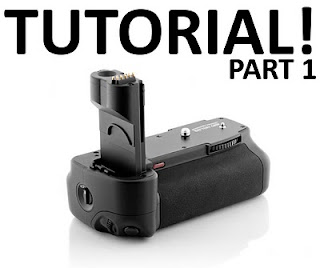In this tutorial you'll learn how to photograph products and still life on a white background with a nice reflection. This is by no means a perfect formula that will work for every product, but just something that I found that works for me for most products I photograph. If you haven't seen our flickr account, check it out here.
What you'll need: (See photo below)- Product to photograph
- White paper and tape
- Clear plexi glass or white shine board
- Simple lamps
- Tripod
- A remote for your camera, but that's optional
Now what I found works best for me is that I make a diffuser for the lights out of paper and tape. I actually have a few of these laying around, in this tutorial I use two, one for the walls around the product and one for the light coming from above. (See photo below.)
The lights I use aren't very special; they're just regular 30W fluorescent bulbs. I lay down the plexi on top of the white seamless and then put the walls up around the product. I then bring a light down for each side and I left two dropping light from above. Sometimes this set-up will leave the front a tad dark, in that case bring in another light from the front, but make sure to diffuse it or it will be harsh. You could also use one of those product tents but I have before and I wasn't really all that fond of them, they seem to take too much light away and they feel very limiting.
When shooting the product try to use a higher aperture so that everything is in focus, this means your shutter speed is going to be pretty slow, so you may want to turn off any other lights that may be nearby as they can mess with your exposure, white balance, and reflections. I also use the lowest possible ISO speed so that there is the least amount of noise. I tend use longer focal lengths to give the products a sleeker and stylish look, but wide angle can also come handy when trying to make things look more epic. This is where your remote would come in handy if you have one. There's a good chance you can get slight camera shake since the shutter will be open for a bit. Self-timer is also a great option.
Try your best to get the white to come out pure or close to pure in camera so you save yourself some time in Photoshop. Come back soon, I'm going to work on a small tutorial for post production for product.
*UPDATE* Part Two of this tutorial can be found here
http://www.accessorygenie.com/
www.flickr.com/accessorygenie
www.twitter.com/accessorygenie



This comment has been removed by a blog administrator.
ReplyDeleteThank you very much for such an informative post!
ReplyDelete